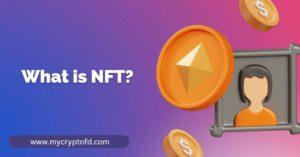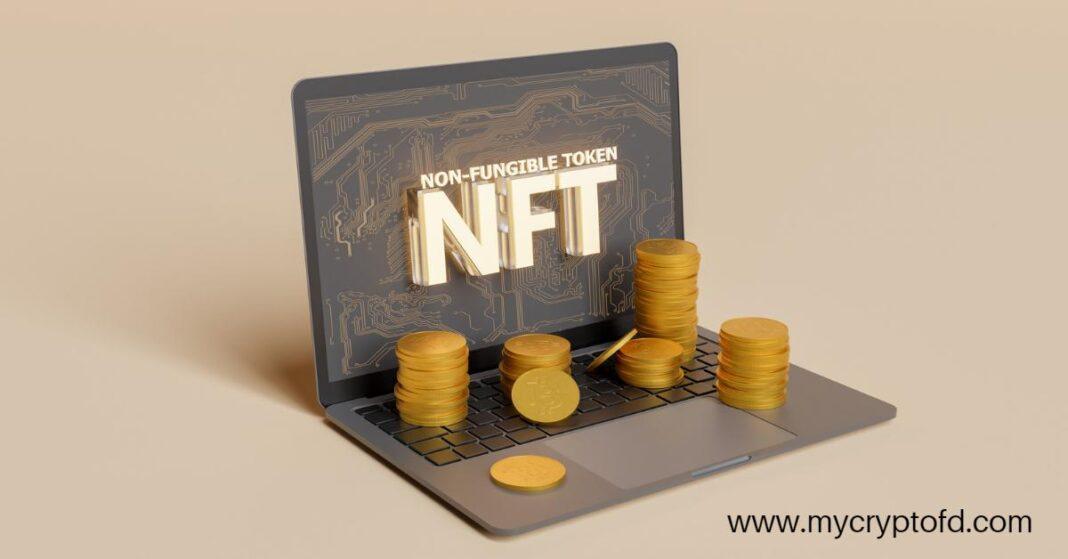NFTs: The Future of Art and Collectibles?
In recent years, Non-Fungible Tokens (NFTs) have become a buzzword in the world of digital art, gaming, and collectibles. From Beeple’s $69 million sale of an NFT artwork to NBA’s Top Shot NFTs selling for millions of dollars, NFTs have captured the attention of investors, artists, and collectors worldwide. In this article, we will provide a comprehensive guide to NFTs, covering everything you need to know about these digital assets.

What are Non-Fungible Tokens?
NFTs are unique digital assets that represent ownership of a specific item or piece of content, such as artwork, music, videos, or even tweets. Unlike cryptocurrencies like Bitcoin, which are interchangeable and have the same value, NFTs are one-of-a-kind and cannot be exchanged for each other. NFTs are created on a blockchain network, usually on the Ethereum blockchain, using smart contracts that ensure authenticity, ownership, and scarcity of the digital asset.
How do NFTs work?
NFTs work similarly to cryptocurrencies, using blockchain technology to record ownership and transaction history. However, instead of representing value or currency, NFTs represent ownership of a specific digital asset. When an artist creates an NFT artwork, they mint it as a unique token on the blockchain, which contains information about the artwork’s ownership, authorship, and provenance. The NFT can then be bought, sold, or traded on NFT marketplaces like OpenSea, Rarible, or Nifty Gateway, using cryptocurrency as payment.
Why are NFTs so popular?
NFTs have become popular for several reasons. First, they provide a new revenue stream for digital artists and creators who were previously unable to monetize their work or received low royalties from traditional distribution channels. NFTs allow artists to sell their work directly to collectors without intermediaries, receive a higher percentage of the sale, and retain ownership of the original artwork.
Second, NFTs provide a new form of collectibles for collectors and investors. NFTs offer a unique and authentic ownership experience, enabling collectors to own a piece of history, culture, or art. NFTs also have the potential to appreciate over time, making them a potentially lucrative investment.
Finally, NFTs offer a new level of transparency and accountability in the digital world. Since NFTs are created on a blockchain network, their ownership, authenticity, and transaction history are publicly accessible and tamper-proof, reducing the risk of fraud, theft, or piracy.
What are the use cases of NFTs?
NFTs have several use cases, including:
Digital Art
NFTs have revolutionized the digital art world, enabling artists to sell their work as unique, authenticated tokens. NFT art has become a popular form of digital collectibles, with some artworks selling for millions of dollars.
Gaming
NFTs have also found their way into the gaming industry, providing players with a new level of ownership and control over their in-game assets. NFTs can represent virtual items, characters, or even land ownership in decentralized virtual worlds.
Collectibles
NFTs offer a new form of collectibles for collectors, providing a unique and authenticated ownership experience for rare or unique items, such as trading cards, sneakers, or even virtual real estate.
Music and Media
NFTs can also be used to sell and distribute music, videos, and other media content, providing artists with a new revenue stream and fans with an authentic ownership experience.
What are the challenges and risks of NFTs?
Despite their potential benefits, NFTs also face several challenges and risks, including:
Environmental Impact
NFTs, like other blockchain technologies, require a significant amount of energy to mint and transact. The high energy consumption has raised concerns about the environmental impact of NFTs and their carbon footprint.
Lack of Regulation
NFTs are currently unregulated, which poses risks for both buyers and sellers. The lack of oversight and standards can result in fraudulent or counterfeit NFTs, which can harm the reputation of the industry.
Volatility and Speculation
NFTs, like other cryptocurrencies, can be subject to high levels of volatility and speculation. The value of NFTs can fluctuate rapidly, making them a risky investment for some.
Accessibility
Finally, NFTs are not accessible to everyone, as they require a certain level of technical knowledge and access to cryptocurrency wallets and exchanges.
Conclusion
Non-Fungible Tokens (NFTs) have revolutionized the way we think about digital ownership and collectibles. NFTs offer a new level of authenticity, transparency, and ownership experience for digital assets, making them a popular choice for artists, collectors, and investors. However, NFTs also face challenges and risks, such as their environmental impact, lack of regulation, volatility, and accessibility. As the NFT market continues to grow and evolve, it is important to remain informed and cautious of these risks.
FAQs
1. Can NFTs be exchanged for other NFTs?
-
No, NFTs are unique and cannot be exchanged for each other. Each NFT represents ownership of a specific digital asset.
2. How do I create an NFT?
-
You can create an NFT on a blockchain network, usually on the Ethereum blockchain, using a smart contract and a platform like OpenSea, Rarible, or Nifty Gateway.
3. Are NFTs a good investment?
-
NFTs, like other cryptocurrencies, can be subject to high levels of volatility and speculation, making them a risky investment. It is important to do your research and invest carefully.
4.Can NFTs be replicated or counterfeited?
-
Technically, NFTs can be replicated or counterfeited, but their authenticity and ownership can be verified on the blockchain network. It is important to use trusted marketplaces and verify the authenticity of the NFT before buying.
5.How do NFTs impact the art world?
-
NFTs have provided a new revenue stream for digital artists and creators, enabling them to sell their work directly to collectors and retain ownership. NFTs have also sparked a new wave of creativity and innovation in the digital art world.


